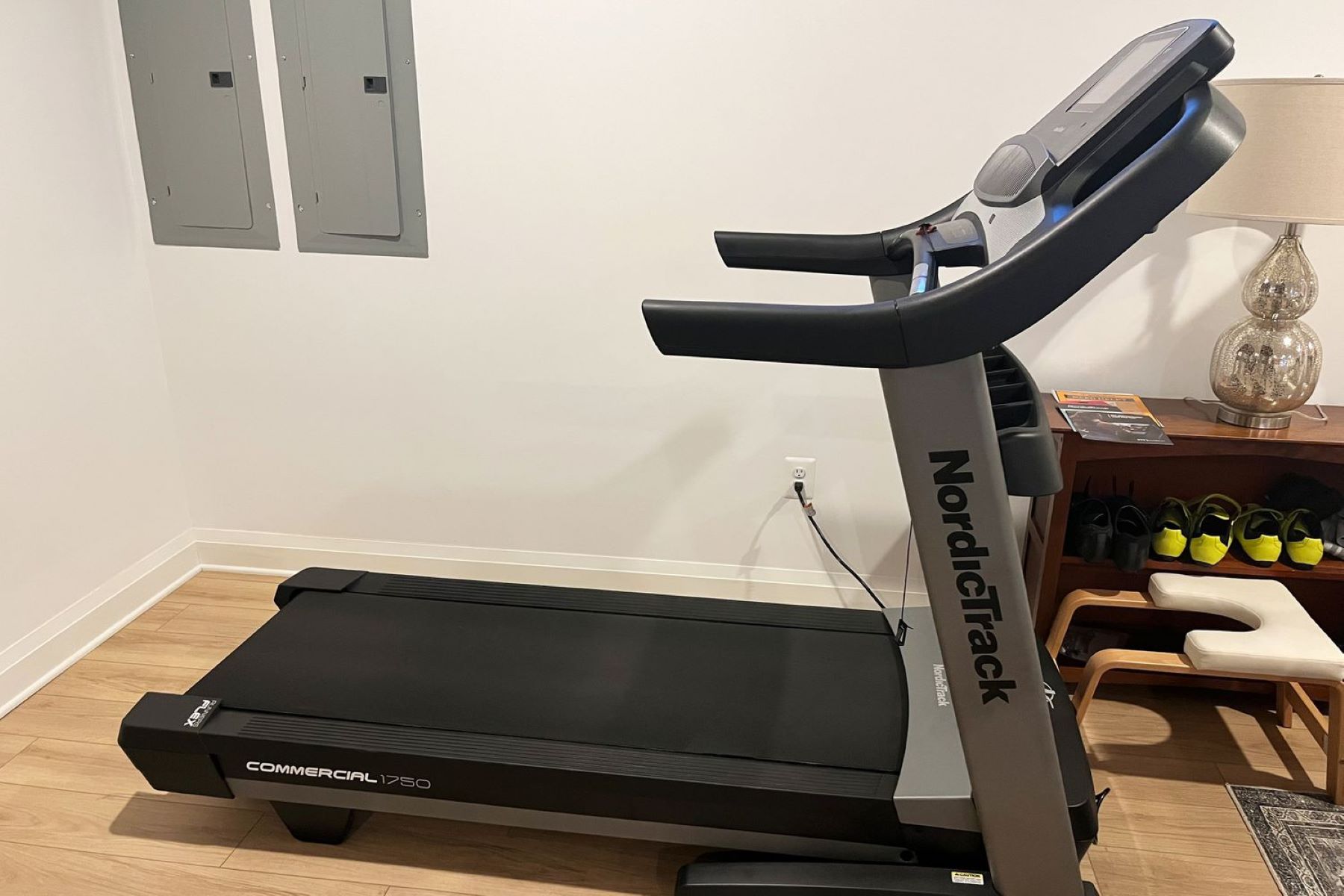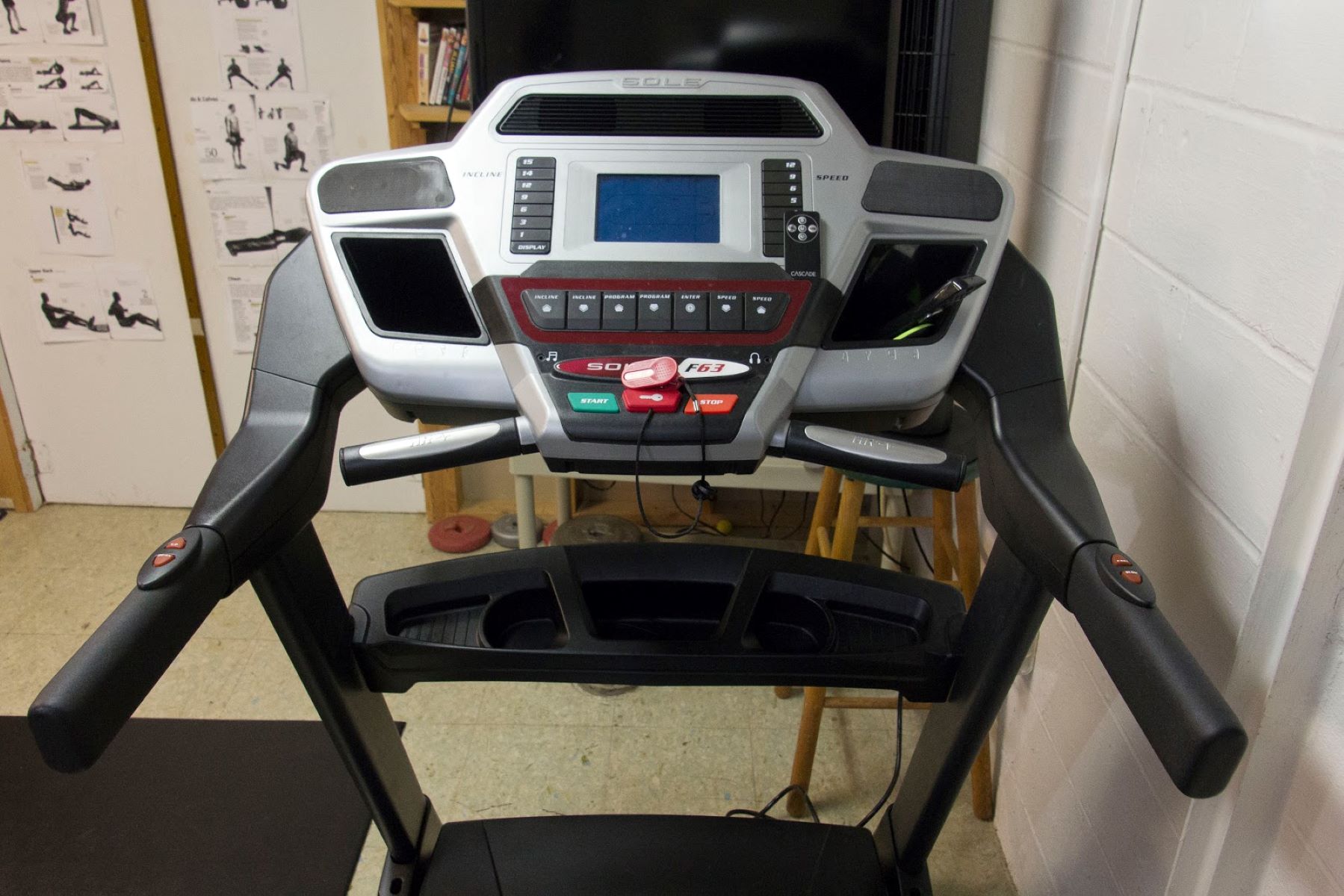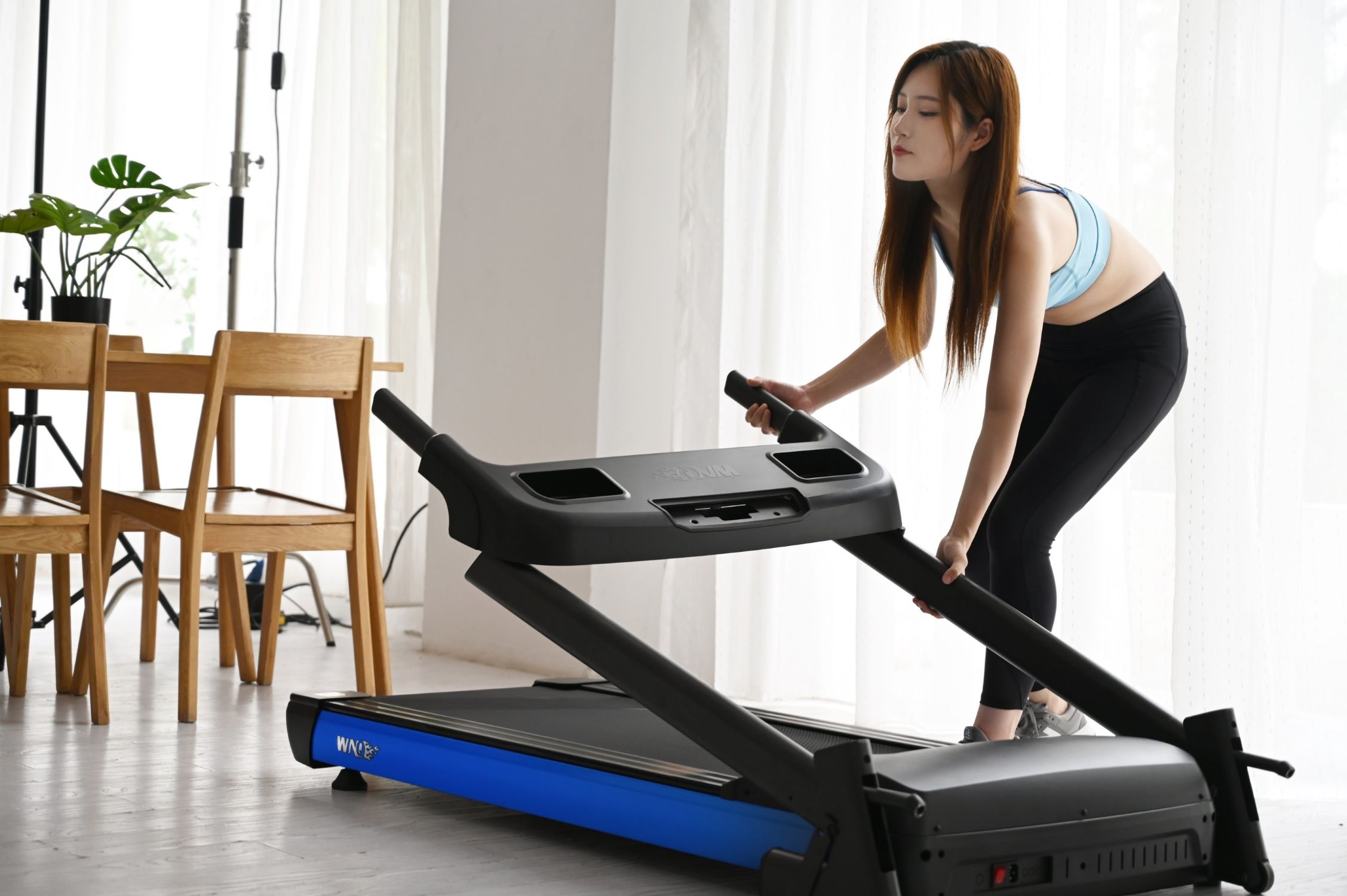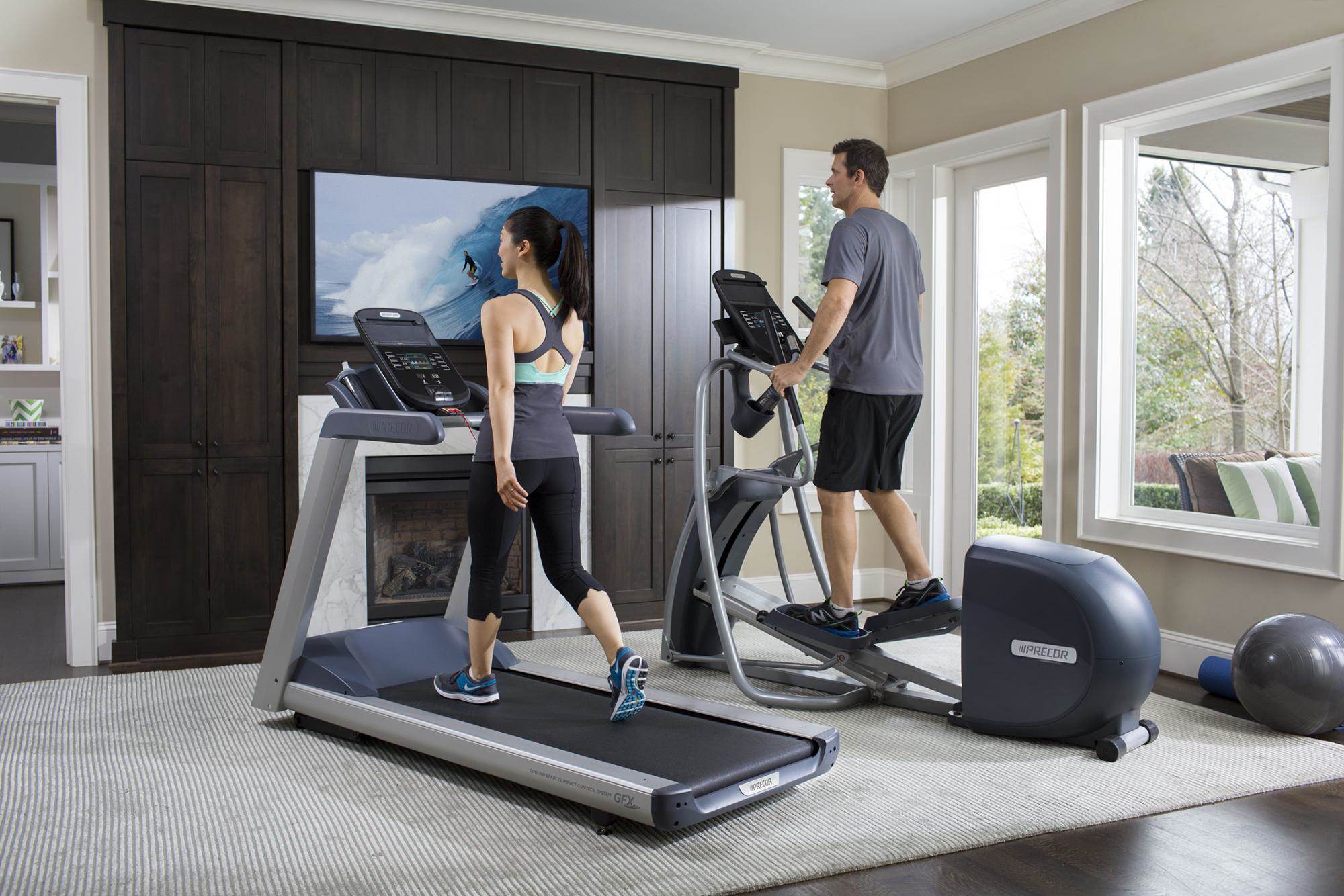Home>Misc>Featured>How Long Should You Do Workout On A Treadmill


Featured
How Long Should You Do Workout On A Treadmill
Modified: October 25, 2023
Discover how long you should do treadmill workouts to achieve your fitness goals. Get expert advice and tips in this featured article.
Introduction
When it comes to achieving your fitness goals, incorporating cardiovascular exercise like treadmill workouts can be highly beneficial. Not only does the treadmill provide a convenient and accessible way to get your heart rate up, but it also allows you to control various aspects of your workout, such as speed, incline, and duration.
However, determining the ideal duration of your treadmill sessions can be a challenging task. Factors such as your fitness level, goals, and overall health should be considered to ensure that you are getting the most out of your workouts without overexerting yourself.
In this article, we will discuss the various factors to consider when determining the duration of your treadmill workouts. We will provide recommended durations for beginners, intermediate exercisers, and advanced individuals. Additionally, we will explore how adjusting the duration can align with weight loss goals. Lastly, we will highlight some signs to watch for to avoid overexertion. By understanding these guidelines, you will be able to tailor your treadmill workouts effectively to meet your specific needs.
Factors to Consider
When determining the ideal duration of your treadmill workouts, it is essential to consider various factors to personalize your exercise regimen. Each individual is unique, and what might work for one person may not work for another. Here are some key factors to consider:
- Fitness Level: Your current fitness level plays a crucial role in determining the duration of your treadmill workouts. Beginners should start with shorter sessions and gradually increase the duration as their fitness improves. Intermediate and advanced exercisers can typically handle longer durations, but it’s important to listen to your body and avoid overexertion.
- Goals and Objectives: What are your fitness goals? Are you looking to improve cardiovascular endurance, lose weight, or enhance overall fitness? Your goals will influence the duration of your treadmill workouts. For example, if your primary focus is weight loss, longer sessions may be beneficial.
- Time Availability: Consider how much time you can dedicate to treadmill workouts. If you have limited time, you may need to adjust your duration to fit within your schedule. Even shorter, high-intensity workouts can be effective when time is a constraint.
- Health and Physical Condition: Take into account any health concerns or physical limitations you may have. It’s important to consult with a healthcare professional before starting any exercise program, particularly if you have any pre-existing conditions or injuries. They can provide guidance on the appropriate duration for your treadmill workouts.
- Recovery Time: Allow yourself enough time to recover between treadmill workouts. Overworking your body without adequate rest can lead to injuries and burnout. Consider incorporating rest days or active recovery exercises into your routine to promote proper recovery.
By considering these factors, you can determine the appropriate duration of your treadmill workouts that aligns with your fitness level, goals, and overall well-being.
Recommended Treadmill Duration for Beginners
For beginners, it’s important to start slowly and gradually increase the duration of your treadmill workouts over time. This approach allows your body to adapt to the demands of exercise and helps prevent injury. Here are some guidelines for beginners:
1. Start with short sessions: Begin with shorter sessions of around 10 to 15 minutes. Focus on maintaining a comfortable pace and gradually increasing your time on the treadmill as your fitness improves.
2. Add a few minutes each week: Aim to increase your treadmill duration by 5 to 10 minutes each week. This gradual progression will allow your body to adapt without feeling overwhelmed.
3. Listen to your body: Pay attention to how your body feels during and after each session. If you experience excessive fatigue, soreness, or discomfort, it may be a sign that you are pushing yourself too hard. Adjust the duration accordingly and prioritize rest and recovery.
4. Focus on consistency: Consistency is key when starting a new exercise routine. Aim for at least three to four treadmill sessions per week, gradually increasing the duration as you progress. This will help build your endurance and fitness level over time.
5. Incorporate rest days: Rest days are essential for allowing your body to recover and adapt to the new demands of exercise. On rest days, engage in light activities or active recovery exercises such as stretching or yoga to promote muscle relaxation and flexibility.
Remember, it’s important to prioritize gradual progression and listen to your body throughout the process. As a beginner, your focus should be on building a solid foundation and establishing a consistent exercise routine that you can sustain in the long run.
Recommended Treadmill Duration for Intermediate Exercisers
As an intermediate exerciser, you have built a solid foundation of fitness and are ready to challenge yourself with longer treadmill sessions. Here are some recommendations to help you determine the ideal duration of your workouts:
1. Aim for 30 to 45 minutes: Intermediate exercisers can typically handle treadmill sessions lasting between 30 to 45 minutes. This duration allows for a sufficient cardiovascular workout and helps you build endurance.
2. Vary your intensity: To make the most of your workouts, incorporate interval training or incline variations. Alternating between periods of higher intensity and recovery can help increase the effectiveness of your treadmill sessions and prevent plateauing.
3. Gradually increase duration: If you feel comfortable with 30 minutes on the treadmill, gradually increase your duration by 5 to 10 minutes every week or two. This gradual progression will challenge your body and improve your fitness level without overexertion.
4. Consider splitting your sessions: If you are unable to dedicate a continuous block of time for a 30 to 45-minute session, consider splitting your treadmill workouts into two smaller sessions. For example, you can do a 20-minute session in the morning and another 20-minute session in the evening.
5. Take recovery days into account: As you increase your treadmill duration, be mindful of allowing yourself adequate recovery time. Plan for one or two rest days per week to allow your body to repair and rebuild. Use these rest days to engage in activities that promote muscle recovery, such as stretching or light walking.
By following these recommendations, intermediate exercisers can continue progressing their fitness levels and reap the benefits of treadmill workouts. Remember to listen to your body, make adjustments as needed, and enjoy the journey towards your fitness goals.
Recommended Treadmill Duration for Advanced Exercisers
As an advanced exerciser, you have developed a high level of cardiovascular fitness and endurance. To continue challenging yourself and reaching new fitness heights, here are some recommendations for determining the ideal duration of your treadmill workouts:
1. Longer sessions for increased challenge: Advanced exercisers can aim for treadmill sessions lasting 45 minutes to an hour or even longer. These longer durations allow for sustained cardiovascular effort and help enhance endurance.
2. Incorporate interval and hill training: To maximize the benefits of your treadmill workouts, include high-intensity intervals and resistance training through hill or incline intervals. This variation in intensity can boost calorie burn, improve cardiovascular fitness, and add a new level of challenge to your sessions.
3. Gradual increases in duration: While your endurance may already be impressive, continue to challenge yourself by gradually increasing your treadmill duration. Aim for increments of 5 to 10 minutes every few weeks, or as your body feels comfortable.
4. Mix up your workouts: Avoid monotony and maintain motivation by incorporating different types of treadmill workouts. This could include tempo runs, long slow distance runs, or even speed intervals. Experiment with different training styles to keep your workouts engaging and exciting.
5. Recovery and rest days: As an advanced exerciser, it is crucial to prioritize recovery and rest days to prevent overtraining and injury. Incorporate one to two rest days per week, using these days for active recovery exercises or cross-training activities that complement your treadmill workouts.
6. Listen to your body: Pay close attention to your body’s signals during and after your treadmill sessions. If you notice signs of fatigue, persistent muscle soreness, or decreased performance, it may be a sign that you need additional rest or a lighter workload. Adjust your duration and intensity accordingly to prevent burnout.
By implementing these recommendations, advanced exercisers can continue pushing their physical limits, improving their cardiovascular fitness, and enjoying the numerous benefits of treadmill workouts.
Adjusting Treadmill Duration for Weight Loss Goals
When it comes to weight loss goals, adjusting the duration of your treadmill workouts can play a significant role in achieving success. Here are some strategies to consider:
1. Longer duration for increased calorie burn: Increasing the duration of your treadmill sessions can help create a higher calorie deficit, which is essential for weight loss. Aim for longer sessions, gradually building up to 45 minutes to an hour or more as your fitness level allows.
2. Incorporate high-intensity interval training (HIIT): HIIT workouts involve alternating short bursts of high-intensity exercise with periods of recovery. These types of workouts have been shown to be effective for weight loss by increasing the number of calories burned both during and after the workout.
3. Consistency is key: To achieve weight loss goals, consistency in your treadmill workouts is crucial. Aim for at least three to five sessions per week, and try to maintain a regular schedule. Consistent exercise helps create a sustainable calorie deficit and promotes weight loss over time.
4. Combine treadmill workouts with strength training: Incorporating strength training exercises alongside your treadmill workouts can be beneficial for weight loss. Strength training helps build lean muscle mass, which increases your metabolism and helps burn more calories even at rest.
5. Gradual progression: If you are new to exercise or have a significant amount of weight to lose, start with shorter durations and gradually increase as your fitness level improves. Focus on consistency and gradually challenge yourself with longer treadmill sessions over time.
6. Monitor your intensity: Pay close attention to the intensity of your treadmill workouts. While high-intensity workouts can be effective for weight loss, it’s important to listen to your body and avoid pushing yourself beyond your limits. Maintain a level of intensity that allows you to sustain the duration of your workouts and avoid overexertion.
Remember, weight loss is a journey that requires a combination of a healthy diet, consistent exercise, and lifestyle modifications. While adjusting the duration of your treadmill workouts can support your weight loss goals, it’s essential to approach weight loss in a holistic and sustainable manner.
Signs to Watch for Overexertion
While regular exercise is important for maintaining good health, it’s crucial to listen to your body and avoid overexertion. Pushing yourself too hard during treadmill workouts can result in injuries or other adverse effects. Here are some signs to watch for to prevent overexertion:
1. Excessive fatigue: Feeling excessively tired during or after your treadmill sessions could be a sign of overexertion. If you’re struggling to complete your usual routine or feeling drained beyond normal levels, it may be necessary to reduce the duration or intensity of your workouts.
2. Pain or discomfort: Pay attention to any pain or discomfort you feel during your treadmill workouts. While some muscle soreness is normal, sharp or intense pain could indicate an injury or overly strenuous exertion. If you experience persistent pain, it’s important to consult with a healthcare professional to avoid further damage.
3. Abnormal heart rate or breathing: Monitoring your heart rate and breathing during exercise is important. If you notice an excessively high heart rate that doesn’t return to a normal range during recovery, or if you’re experiencing difficulty breathing, it may be a sign that you’re pushing yourself too hard. Adjusting the intensity or duration can help prevent overexertion.
4. Decreased performance: If you find that your treadmill workouts are becoming increasingly difficult, and your performance is declining rather than improving, it could be a sign of overexertion. This could manifest as slower times, reduced endurance, or difficulty maintaining previous levels of intensity. Take a step back and reassess your training plan to prevent burnout.
5. Persistent muscle soreness: While muscle soreness is expected after a challenging workout, if you experience prolonged or severe muscle soreness that doesn’t improve with rest, it may be a sign that you’re overexerting yourself. Allow enough time for proper recovery to avoid overtraining and potential injuries.
6. Changes in sleep patterns or mood: Overexertion can have an impact on your overall well-being. If you notice changes in your sleep patterns, such as difficulty falling asleep or staying asleep, or if you experience mood swings, irritability, or feelings of depression, it may be related to overexertion. Adjusting the duration and intensity of your treadmill workouts, as well as prioritizing rest and recovery, can help restore balance.
Remember, it’s essential to find a balance between pushing yourself to achieve your fitness goals and ensuring that you do not overexert your body. By recognizing and addressing these signs of overexertion, you can maintain a safe and effective treadmill workout routine.</p
Conclusion
In conclusion, determining the ideal duration of your treadmill workouts depends on various factors such as your fitness level, goals, and overall health. It’s important to consider these factors and personalize your exercise regimen to ensure that you are getting the most out of your workouts without risking overexertion or injury.
For beginners, starting with shorter sessions and gradually increasing the duration is recommended. Intermediate exercisers can handle longer durations and may incorporate interval training or hill variations to challenge themselves. Advanced exercisers can push their endurance with longer sessions and diverse workout styles.
When aiming for weight loss goals, adjusting the duration of your treadmill workouts can support calorie burn and create a sustainable calorie deficit. However, it is crucial to approach weight loss holistically and combine exercise with a healthy diet and lifestyle modifications.
Throughout your treadmill workouts, be mindful of signs of overexertion such as excessive fatigue, pain, abnormal heart rate or breathing, decreased performance, persistent muscle soreness, and changes in sleep patterns or mood. By listening to your body and making necessary adjustments, you can prevent overexertion and exercise safely.
Remember, finding the right duration for your treadmill workouts is a personal journey. It’s important to start at a comfortable level, gradually increase the duration, and prioritize rest and recovery. Be consistent, stay motivated, and enjoy the benefits of regular treadmill exercises on your journey towards improved fitness and overall well-being.









